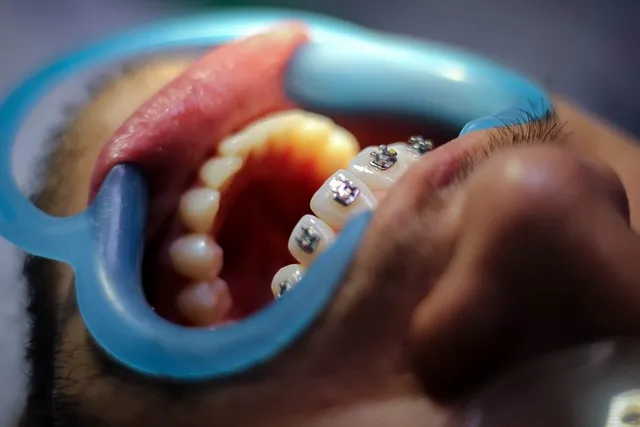
Introduction:
Dentures play a crucial role in restoring smiles and oral function for individuals with missing teeth. However, achieving a comfortable and effective denture fit can sometimes be challenging. In this blog post, we will explore common problems that may arise during denture fittings and provide practical troubleshooting strategies for dental professionals to ensure optimal comfort and functionality for their patients.
1. Poor Denture Stability:
Problem: One of the common complaints is poor denture stability, leading to discomfort and difficulty in speaking or eating.
Troubleshooting Strategy:
Assessment: Evaluate the fit of the denture base. Check for any irregularities or discrepancies in the impression and model.
Adjustment: Make necessary adjustments to the denture base, addressing pressure points or areas causing instability.
Adhesive Use: Educate patients on the proper use of denture adhesives for enhanced stability, if necessary.
2. Sore Spots and Irritation:
Problem: Patients may experience sore spots or irritation, particularly during the initial days of wearing dentures.
Troubleshooting Strategy:
Tissue Assessment: Thoroughly assess the patient’s oral tissues for any signs of irritation or pressure points.
Adjustment: Make precise adjustments to relieve pressure on sore spots. Pay attention to the denture borders and the fitting surface.
Patient Education: Provide detailed instructions to patients on how to detect and report sore spots promptly.
3. Difficulty in Chewing or Speaking:
Problem: Some patients may encounter difficulty in chewing or speaking effectively with their dentures.
Troubleshooting Strategy:
Functional Evaluation: Evaluate the denture’s occlusion and alignment to ensure proper functionality.
Adjustment: Fine-tune the occlusion and biting surfaces to enhance the denture’s performance during mastication and speech.
Muscle Adaptation: Encourage patients to practice speaking and chewing gradually to allow for muscle adaptation.
4. Loose Dentures:
Problem: Loose dentures can be a persistent issue, affecting both upper and lower arches.
Troubleshooting Strategy:
Reassess Fit: Reevaluate the overall fit of the dentures, considering changes in the oral tissues.
Relining: If appropriate, consider relining the denture to accommodate changes in the underlying bone structure.
Implant Solutions: Explore implant-supported dentures for enhanced stability and retention, especially for lower dentures.
5. Gagging Sensation:
Problem: Some patients may experience a gagging sensation, affecting their ability to wear dentures comfortably.
Troubleshooting Strategy:
Palatal Adjustments: Examine the palatal contours of the denture and make adjustments to minimize contact with the gag reflex trigger points.
Gradual Adaptation: Encourage patients to wear their dentures gradually, allowing time for adaptation and reduced sensitivity.
6. Changes in Denture Fit Over Time:
Problem: Denture fit may change over time due to factors like natural bone resorption.
Troubleshooting Strategy:
Regular Follow-Up: Schedule regular follow-up appointments to monitor changes in oral tissues and assess denture fit.
Relining or Remaking: Consider relining or remaking dentures as needed to accommodate alterations in the oral anatomy.
Educate on Maintenance: Educate patients on proper denture care and maintenance to prolong the lifespan of their prosthesis.
Conclusion:
Troubleshooting common problems in denture fittings requires a systematic approach, combining thorough assessments, precise adjustments, patient education, and, in some cases, innovative solutions like implant-supported dentures. By addressing issues promptly and tailoring solutions to individual patient needs, dental professionals can enhance the comfort and functionality of dentures, ultimately improving the quality of life for their patients with missing teeth. Remember, effective communication with patients and regular follow-up appointments are key components in achieving successful denture fittings.
Muskan.ai – An ecosystem powered by Artificial Intelligence for dentistry.
Introducing Muskan.ai, a cutting-edge ecosystem driven by Artificial Intelligence tailored for the field of dentistry. Our innovative AI engine seamlessly integrates with a suite of AI products, empowering dentists to elevate their practice. Through this integration, dentists can optimize their workflow, save valuable time, and concurrently boost their revenue.
With our advanced AI-based radiography analysis tool, dentists can enhance patient treatment acceptance rates and obtain a valuable second opinion promptly. Our AI-powered oral hygiene checkups provide dentists with insights into a patient’s dental status, allowing for efficient time management and enabling the feasibility of tele-dentistry. Patients can conveniently connect with their dentists through a user-friendly mobile app.
Meet DAISY, our AI-powered dentalGPT, designed to interact naturally with patients, addressing their minor queries regarding dental health. In addition to these features, we are at the forefront of championing AI-based Oral Cancer Screenings, offering timely interventions and facilitating recovery without resorting to invasive treatments. Muskan.ai is not just a technological advancement; it’s a transformative force enhancing both dentistry practice and patient care.

